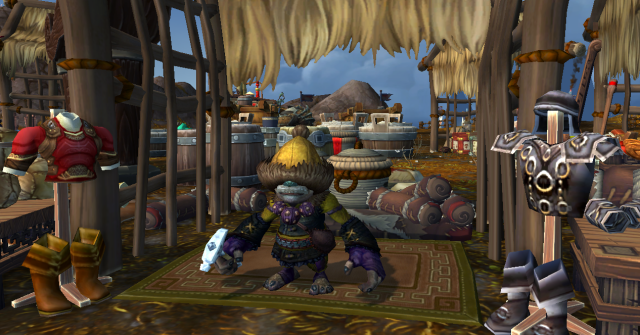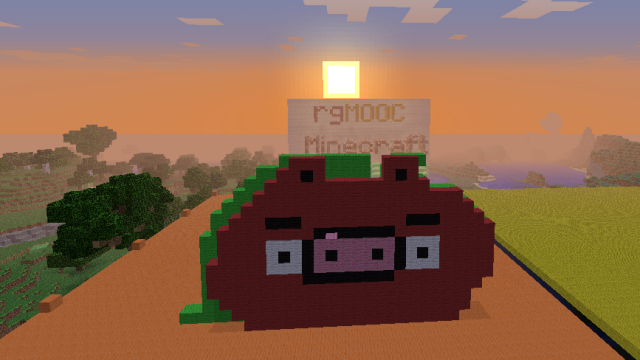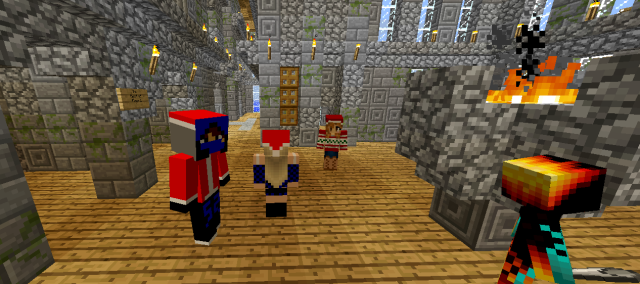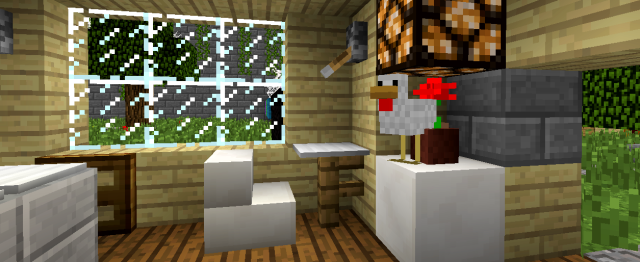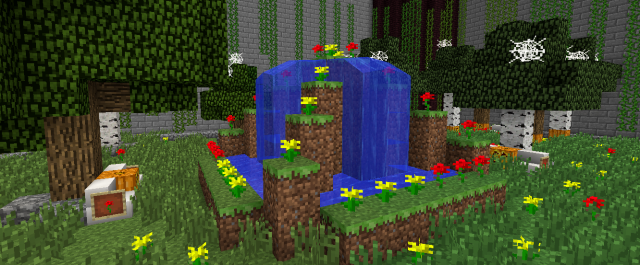I’m trying my hand at writing fan fiction using the voice of my World of Warcraft avatar Lotao and specific quest content in the Mists of Pandaria expansion. Numbers in parentheses refer to endnotes that link to these quests; links within the story provide general information about NPCs (non-playing characters) about which readers may be curious. I took the screenshots on-site recently, not at the time Lotao engaged in the quests.

Thunder Hold in the Jade Forest
Taran Zhu’s Lesson. I remember meeting my first pandaren, Taran Zhu, Lord of the Shado Pan, and how curious it was, after many years as a Blood Elf adventurer, to hear someone speak of the land as a living being, as an entity that emotionally reacts to war, in this case the endless Horde-Alliance conflict. It was my first day in Pandaria. The Horde troops on our skyship, Hellscream’s Fist, had barely touched ground when General Nazgrim ordered me to storm past the Alliance defenders of Thunder Hold to reach and kill their Captain Doren. Nazgrim was already there. But before either of us could get to Doren, he jumped off the balcony into his gyrocopter. We watched as Doren and his airborne troops attacked our skyship. It exploded in a ball of fire, pieces scattering into the sea and onto the rocky coastline.

Wreck of Hellscream’s Fist
Nazgrim went totally berserk, overcome with rampaging hatred, as if demon possessed, when suddenly Taran Zhu appeared. His dramatic entrance and garb – red bandana across his mouth and beautifully crafted armor and conical hat – made quite the first impression. Without a word, he waved his hands around Nazgrim, who quickly calmed down, calm for Nazgrim, that is. He is ever the hothead, even in the best of circumstances. Taran Zhu, stern, in full control of his emotions, and apparently gifted with considerable powers, made it clear by his sheer stance that we were unwelcomed. Then he warned: “Pandaria is not like whatever land you come from; it lives and breaths. YOU should be careful what kind of energy you bring here.” (1)

Taran Zhu (right) & Mayor Honeydew in Honeydew Village
Taran Zhu vanished as quickly as he had appeared. Nazgrim, seemingly restored to his gruff self and unfazed by the encounter with Taran Zhu, ordered me to hurry to the nearest town, Honeydew Village, to seek help for troops wounded in the crash. When I arrived, standing next to the village mayor was Taran Zhu, who explained: “This land responds to negative energy in kind. The hatred, doubt, and violence you have brought here now ooze out of Pandaria like blood from an open wound.” (2) Indeed, visible manifestations of negative energy known as sha were everywhere in and around Thunder Hold, and outside the village were sha-infested tigers, vicious, aimlessly pacing. It dawned on me that a powerful sha was what Taran Zhu had dispelled from Nazgrim.

Sha shooter at Thunder Hold
Much later, after many an encounter with sha, I reflected on Taran Zhu’s warning: Perhaps each land, not just Pandaria, responds in its own way to the negative energy of those who dwell upon. Why wouldn’t it? The land is the lifeblood of all creatures and plants, of all of us. When it’s contaminated with hatred in whatever form – war, pollution, vicious words and acts against others – we are all diminished, perpetrators and innocent alike, the born and the unborn.

Honeydew Village with Thunder Hold in the background
Lorewalker Cho’s Lesson: Temporarily based in Honeydew Village, I continued following Nazgrim’s orders to secure the area, which involved subduing the hozen near the village. Hozen are an armed monkey-like race that, in my view, are more of a nuisance than a serious threat. They scampered around, weapon in hand, like mischievous children. I didn’t want to kill any of them, but I had my orders and ended up killing one of their main chiefs, Dook Ookem – at which point none of the other hozen attacked me; instead, they ran away willy-nilly whenever I approached.
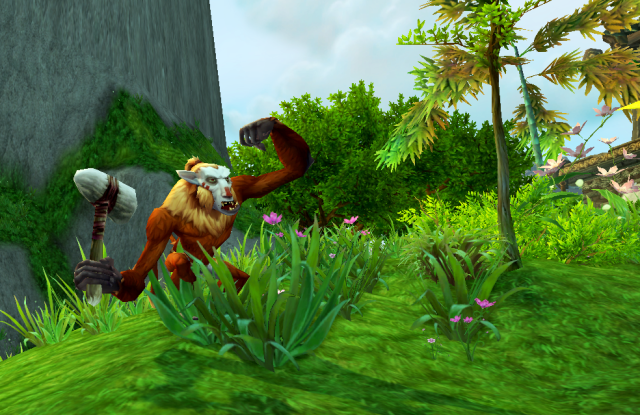
Forest Hozen near Honeydew Village
I was about to mount up and leave those fear-crazed hozen when Lorewalker Cho jumped down from a path on the ledge above. Cho, a pandaren, heavy-set as all of them are, wearing an intricately patterned cloth robe, greeted me with a smile and twinkle in his eye: “Hallo, stranger! You are making quite an impression with the local hozen. I daresay they’re starting to fear you.” He could easily tell that I was connected to the crashed skyship, an invader and potential occupier, but that didn’t seem to bother this gentle, soft-spoken fellow. He said he’d like to chat over a cup of tea. Why not? I thought. After all, I hadn’t been treated so kindly, not by anyone including my own kind, since I landed in Pandaria. I was happy to join him. Besides, I was exhausted. It’d been an enormously trying day. (3)

Cave of Words exterior
I followed him up the path to the nearby Cave of Words. Its wall were draped in scrolls, several braziers held low flames, and a small scroll, lantern, and steaming teapot sat on a low wooden table. Sitting on the stone-tiled floor, we sipped green tea. It didn’t take long to realize that Cho had more in mind than casually chatting and giving a war-weary adventurer a bit of a rest. He wanted to enlighten me on the Pandaren’s distant past and, not incidentally, teach me something leadership. He told me about the mogu, a magically powerful race that many millennia ago enslaved the Pandaren – until, learning courage from the first Pandaren monks, they successfully revolted. “You see,” said Cho, “those who lead through fear only stay in power while those they govern lack courage.” Then referring to how fearful the hozen grew after Dook Ookem’s death, he said, “The hozen are many things, but they are not cowards – not for long. If you don’t wish to fight them, you must…. inspire them!” (4)

Cave of Words interior
During our tea, Cho switched from calling me “stranger” to calling me “traveler”; thus I’m pretty sure he could tell that I was in no way a leader of Horde forces. “Traveler” is an appropriate description; “explorer” and “mercenary” fit me too. But even though I do expect money for missions I accomplish for the Horde, including killing Horde foes in fact or potentially so, I think of myself as an adventurer and seeker of wisdom. Perhaps he knew that about me then; he certainly came to know it. We became good friends – actually more than friends. For example, from time to time I’ve had the privilege of assisting him in gathering Pandaren lore, as have other “strangers” that he’s taken a liking to.

Scenery outside the Cave of Words
But that’s another story. There in the Cave of Words, during my too-brief respite from the war, I think he was presenting me with a kind of riddle: how could I “win hearts and minds,” as the old phrase goes; how could I inspire rather than fight? There was no way that General Nazgrim would even try; his goal was to use brute force to subdue and dominate whoever stood in his way. I haven’t solved the riddle yet, although I do suspect that part of the answer lies in learning how persons like Cho, and even someone as different from him as Taran Zhu, inspire their followers. In any case, one lesson I did take from that afternoon with Cho is that lore holds much wisdom, if we devote time to its study.
________________________________________
The Mists of Pandaria quests used to tell this story:
(1) The Final Blow!
(2) You’re Either With Us Or. . .
(3) Lay of the Land
(4) Stay a While, and Listen





